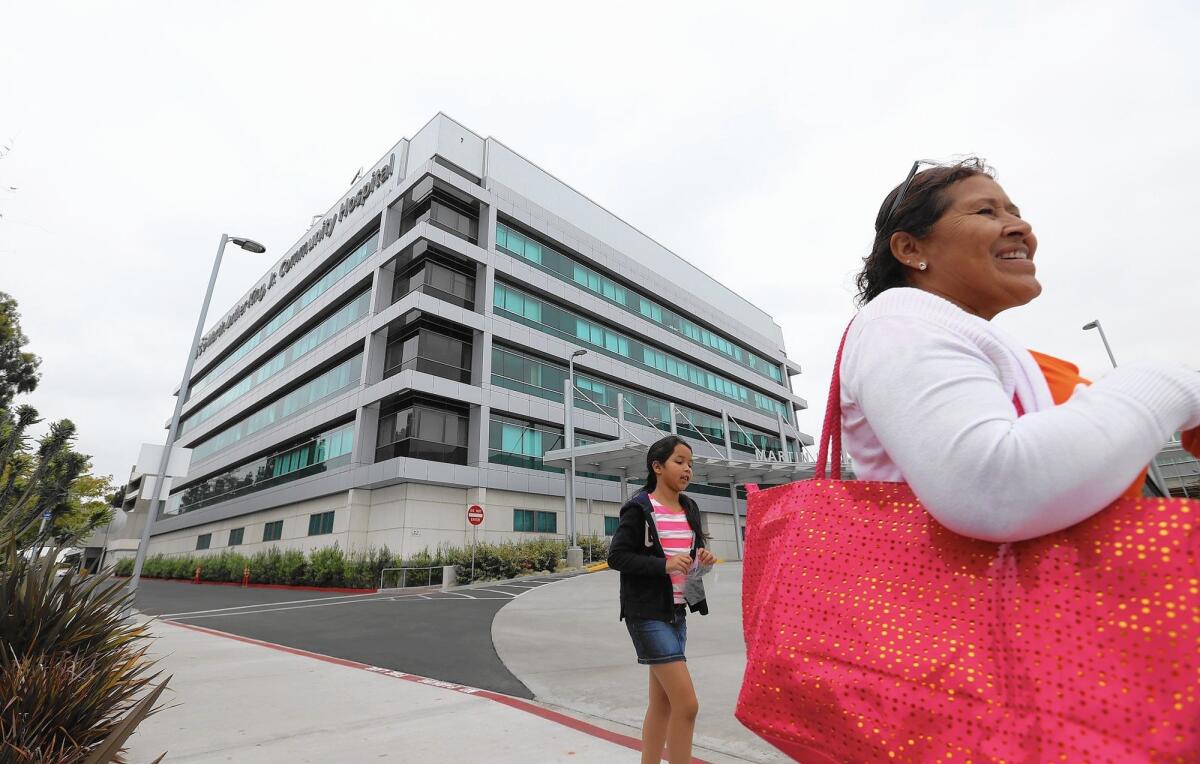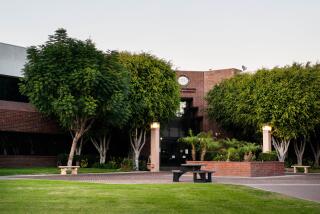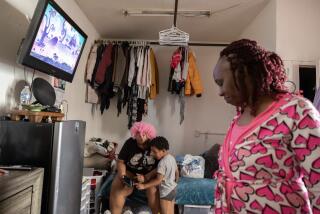Community celebrates opening of Martin Luther King hospital

A woman and child walk in front of the new Martin Luther King Jr. Community Hospital.
When King/Drew hospital closed eight years ago, the people of South Los Angeles feared that it would not be replaced.
In low-income communities of color, they say, businesses leave, never to return.
But on Tuesday, residents rejoiced as the long-delayed Martin Luther King Jr. Community Hospital opened, delivering on a long-standing promise by the county to bring medical care back to an area with a high rate of chronic illnesses and traumatic injuries.
Eager community members who visited the new 131-bed facility said it was worth the wait.
“I’m so happy that I can jump up and click my heels,” said a beaming Gloria Jernigan, 57, of Watts. “We fought for this and we got it back.”
The old hospital, once a source of pride for the African American community, lost county funding and its accreditation following poor medical care, staff errors and a series of controversial patient deaths. Jernigan said the 2007 closure was heartbreaking and hopes the new MLK hospital can bring back respect to the community.
“When a hospital goes down, it shows that nobody cared about it,” she said. “But there was a circle of people who fought to save it and resurrect it from the ground.”
The new hospital, which is housed in a tower of the facility, cost $250 million and is on a $650-million medical campus that includes an urgent care, outpatient center and mental health facility.
Three woman whispered about King/Drew’s troubled past as they surveyed the lobby, then celebrated the future with a tour. They were joined by three others, and all nodded in approval as they walked through the meditation room, resource center and admission area.
The group bypassed the emergency room waiting area to protect patients’ privacy. But Doris Daniels, 69, sneaked a quick peek.
“Is this part of the old hospital?” she asked.
“Yes,” said Al Arizmendez, the tour guide. The first two levels were used, he said, but the other three floors were not.
As the elevator let the tour group out onto the fourth floor, the visitors looked around at the bare walls. The board of the private, nonprofit hospital chose to spend all of its money on staffing and technology, Arizmendez said, before leading the group into a patient room.
The visitors stepped in and immediately let out “Oohs” and “Awws.”
“Look how big this restroom is,” Michelle Young, 53, said as she pulled back the shower curtain to expose a spacious stand-up shower. “It’s like a spa.”
“Please don’t tell anybody we have this,” Arizmendez joked. “People might want to stay. It’s like second level cable at the Marriott. You can order food or watch videos on health education,” on the interactive TV.
Carol Mitchell, 67, stared out the large window, drawn to the vista of the skyscrapers of downtown Los Angeles in the distance.
“The view is phenomenal,” she said. “It’s healing. If this doesn’t make you feel better, I don’t know what will.”
Young, meanwhile, opened the cabinets and tested the sturdiness of a table. Pleased with quality, she checked out the couch, which unfolds into a bed.
“They put a lot of thought into this place,” said one of the other women. “That’s good.”
Back in the lobby, Arizmendez handed the group brochures that explained the services the hospital provided. He told the women to spread the word.
Barbara Calhoun, a former Compton city councilwoman, said she planned to praise the hospital at a meeting later in the day.
“I was impressed,” she said. “It was worth the wait.”
Twitter: @AngelJennings
More to Read
Sign up for Essential California
The most important California stories and recommendations in your inbox every morning.
You may occasionally receive promotional content from the Los Angeles Times.










